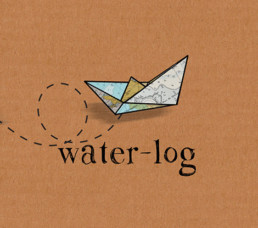Martinique, our playground for the last week or so was a strange beast.
Imagine everything that you have pictured in your mind about a tropical Caribbean island; then add the rastas, resplendent with their dreadlocks and spliffs; include the fishermen with their little, colourful wooden boats and weathered faces; put in the big, laughing women, singing over their searing hot plates of barbecued chicken and flatbreads; then attach a whole chunk of mainland France, hit it with a hurricane and see what an active volcano does to it.
Weird, eh?
Its architectural vernacular is similarly a bit of a mongrel: a slightly run down patchwork of corrugated iron, timber and stone with colourful murals, faded colonial grandeur with columns and wrought iron balconies. There are also many abandoned buildings.
The port of Marin, where we cleared in, is attached to a small hilly town. The centre of the community seems to be the local church, which has a roof like a wooden arc, with shuttered windows that open onto views of the sea. Some local buildings are painted in bright colours and new sits right next to old; no more so than at the town hall where a freshly painted bright blue wall adjoins a stone ruin. The people are friendly and chatty and a total melting pot of European and Afro-Caribbean and any mixture in between.
After this we made stops in Petite Anse d’Arlet and Anse a l’Ane before heading for the capital. Both of these were picturesque seaside towns with all the life of the place focussed on the waterfront. The houses are pretty pastels, the beaches are perfect white sand, the palm trees sway gently in the breeze and it is everything that you imagine a postcard from the Caribbean islands to look like. The people here are very much the French on holiday, sipping on chilled white wine or beer in the middle of the day or playing about on their powerboats with the ubiquitous troop of giggling girls in bikinis. We were all left a little dissatisfied: holiday resorts are all well and good but they don’t divulge the genuine character and soul of a place.
We enjoyed a couple of days in this paradise before agreeing that we were itching to uncover something more substantial. So we moved on to Fort de France, the capital of Martinique, dominated by Fort Louis which, frustratingly, you cannot visit as it is actively working as a naval base. The rest of the city consists of shops: stalls of tat for tourists, a shopping centre (which are the same the world over), a food market for locals, an overpriced food market for tourists, discount stores and clothing stores and one lone chandlery. That’s pretty much all that is there. Aside from the Bibliothèque Schoelcher, a beautiful little pavilion of a library, which was built in Paris and shown at the 1889 World exposition, then dismantled and sent to Martinique in bits. With the exception of this little gem the whole town is utilitarian, a bit seedy and downright bleak.
Continuing our quest for a more favourable lasting impression of Martinique’s character we journeyed on northwards to St Pierre. This used to be the country’s capital and was previously known as the ‘little Paris of the West Indies’. However, it’s fortunes were forever changed when Mount Pelée, the active volcano just to the North, erupted in 1902 and killed all but three of the 30,000 inhabitants. This story can be seen all over the city as ruins are scattered about, sometimes incorporated into new buildings. Perhaps the most poignant of these is the theatre, which was built in the 18th century but was destroyed by a hurricane some decades before the eruption and had just started to be restored when the volcano sealed its fate.
But, to our joy, the town of St Pierre is a real working community, without tourist swarms of the beaches and without the cheerlessness of the new capital. St Pierre just gets on with it, leaving you free to wander its cobbled streets, clamber over its historic remains, drink its rum and then leave. Really rather French, n’est pas?
